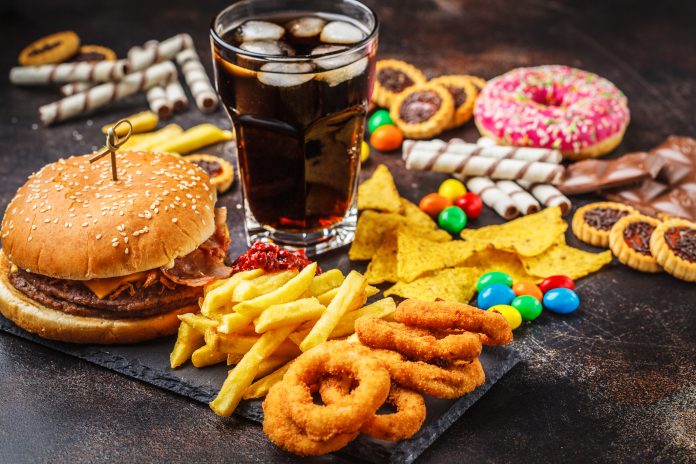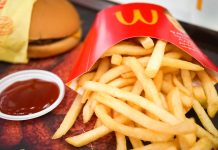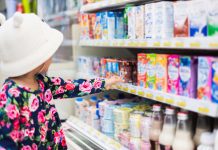Katharine Jenner, Director of Action on Sugar and Action on Salt, explains how childhood obesity remains a key issue and how junk food prices contribute
Following the Government’s new landmark legislation which has finally been passed to ban multi-buy promotions of some unhealthy food and drinks sold in medium and large grocery stores across England[1] this October, the new law is intended to discourage shoppers from buying too many foods and drinks which contribute to children’s excess sugar and calorie intake.
Whilst this ‘excess’ is likely to lead to weight gain (and not affecting the cost of our everyday shopping baskets), it will encourage stores to provide and sell more everyday food items and healthier options on special offer – leading to further improvements to our health.
Limiting multi-buy promotions (e.g. 3 for 2, 30% extra free) on food and drink products in a cost-of-living crisis sound illogical until you realise that such promotions are ‘fake bargains’ and do not actually save shoppers money.
Why? Because people buy more than they had planned and budgeted for. In fact, up to 20% more – that’s with the Government’s own impact analysis highlighting that multibuy promotions result in an additional £75 of spending per year for an average household[2]. Crucially, they do not lead to shoppers spending less during their next shop[3].
Is childhood obesity still an issue in a cost-of-living crisis?
Childhood obesity is one of the biggest public health problems our country currently faces. To help put this into perspective, one in three children in England are above a healthy weight when they leave primary school and children with obesity are five times more likely to become adults with obesity[4].
This increases their risk of developing a range of conditions including type 2 diabetes, cancer, heart and liver disease and has an immediate cost on their mental health. Children from deprived areas are more than twice as likely to have obesity than their more affluent counterparts, and this gap is widening. The need for action is clear.
Obesity is a complex issue with many causes including genetics. But the largest factor contributing to weight gain and obesity is regularly consuming more calories than is expended. One of the biggest influences driving excess consumption is the world we live in – i.e. the lack of availability of healthier food, lack of affordability of healthier food and the appealing marketing of less healthy food.
The Government can’t do much about genetics but they can play a key role in helping to shape an environment that makes it easier for everyone to be healthy. The Government, as Jo Churchill MP stated in October 2021, ‘wants to support everyone to eat healthier foods more regularly and this starts with helping supermarkets and manufacturers promote healthier food choices.’ Rather than limiting people’s freedom of choice, this new legislation will support the nation to make healthier choices.
Why are price promotions being targeted?
Shoppers struggle to choose healthier options in the face of endless prompts to consume less healthy food – and unfortunately the food industry takes advantage of this[5]. Promotions such as Buy One Get One Free (BOGOF), 3 for 2, ‘50% extra free’ increase sales by triggering impulse purchasing, frequency of purchasing and brand loyalty. Why else would retailers use them[6]?
If you’re buying soap or socks, this is great. More soap in the cupboard. More socks in the drawer. However, volume promotions for food have an alarming result – you buy and eat more at the time and then spend more again on the following shop. The Government’s own analysis showed this can increase the total amount of household food and drink purchased by around 20%. In November 2021, Maggie Throup MP, reminded us that promotions appear to be mechanisms to help consumers save money.
The data shows they increase spending by encouraging people to buy more than they had intended. The food is not ‘stockpiled’. Instead, cupboards are still left bare for those struggling to make ends meet.
What foods and drinks will be included?
The new rules will only apply to sugary and high calorie food categories that contribute to children’s sugar and excess calorie intakes including biscuits, crisps, chocolate and pizza or to products like biscuits and crisps which have been reformulated to be healthier (For example, McVities and Walkers have recently launched healthier biscuits and crisps which could still be promoted due to their lower sugar, salt and fat content).
As Lord Kamall raised in the Food Promotion and Placement Regulations Debate in November 2021, less than 1% of food and drink products promoted in high-profile locations are fruit or vegetables. Imagine instead that the promotions could only apply to food that is actually on your shopping list. The consumer price index basket represents the foods and drinks that people put in their shopping baskets. Of the 143 categories included in the 2022 index, 107 (i.e. 3 out of 4) categories would not be covered by restrictions[7].
How effective will the restrictions be?
The Government’s own Impact Analysis estimated the combined place and price promotions restrictions will lead to health benefits worth £5 billion PLUS a net benefit to society estimated at around £7 billion pounds over a 25-year assessment period.
Public health interventions are often more effective than the food industry suggests. The Soft Drinks Industry Levy (SDIL) led to manufacturers reducing a whopping 44 million kg of sugar each year from their drinks. Surprisingly, sales of these drinks (subject to the levy) increased, allaying industry fears that the levy would lead to a loss of profit. Furthermore, the total sugar purchased per household from drinks decreased across all socio-economic groups.
Although restrictions will not immediately appeal to retailers who are keen to protect their sales from impulse buys, they do recognise that they are not genuinely giving a good deal to their customers. It will protect progress in those supermarkets that have already made voluntary commitments by reducing multibuy promotions and ensure others adhere to their standard[8].
Ultimately, the new legislation will create a much-needed level playing field within the grocery sector and finally put healthier food in the spotlight, right where the public want it[9]. Any further delays to its implementation will in turn result in a delayed public health benefit with shoppers once again getting the raw end of the deal.
[1] The Food (Promotion and Placement) (England) Regulations 2021 https://www.legislation.gov.uk/ukdsi/2021/9780348226195
[2] Department of Health and Social Care 2019 Final impact assessment: restricting volume promotions of HFSS products https://assets.publishing.service.gov.uk/government/uploads/system/uploads/attachment_data/file/1003921/impact-assessment-for-restricting-volume-promotions-for-HFSS-products.pdf
[3] Hawkes C. Sales promotions and food consumption. Nutrition Reviews 2009. 67(6):333–342
[4] NHS Digital (2021) National Child Measurement Programme, England 2020/21 School Year https://digital.nhs.uk/data-and-information/publications/statistical/national-child-measurement-programme/2020-21-school-year
[5] Cohen D and Lesser L. Obesity prevention at the point of purchase. Obesity Reviews 2016. 17:389–396.
[6] Hawkes C. Sales promotions and food consumption. Nutrition Reviews 2009. 67(6):333–342.
[7] Consumer price inflation basket of goods and services: 2022
https://www.ons.gov.uk/releases/consumerpriceinflationbasketofgoodsandservices2022
[8] Tuesday 8 May 2018. House of Commons. Health and Social Care Committee Oral evidence: Childhood obesity, HC 882. P.33.
[9] Savanta ComRes interviewed 2,245 UK adults aged 18+ online from 4th – 6th February 2022. Data weighted to be demographically representative of the UK population. Full data tables available upon request. 72% of people support restrictions on shops promoting unhealthy foods in prominent areas such as checkouts and shop entrances, and 57% support restrictions on promotional offers on unhealthy foods in supermarkets. Support increased with age with highest levels of support seen in the 55-64 and 65 plus age groups
Editor's Recommended Articles
-
Must Read >> UK law now requires calorie information on menus














